 |

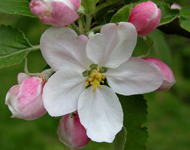
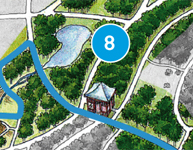 |
| There is nowhere better to experience the
awakening spring in several regions of the Earth at one and the same
time. By following our suggested route, you will discover the plants and
parts of the Botanic Garden that are now at their most beautiful. Of
course you will also find delightful plants that are in bloom and well
worth seeing in other parts of the Garden too. We wish you a pleasant
trip through the plant world. |
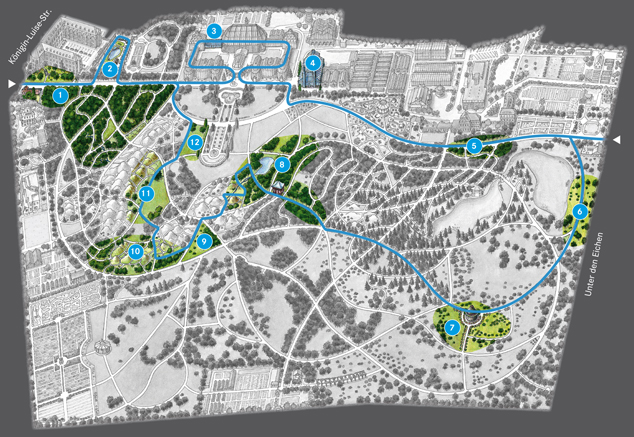 |
| |
|
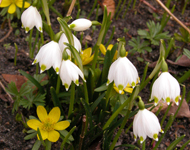 |
 In and around the woodland dense with European Beech trees, you will
already be greeted at the start of spring by a sea of early bloomers,
which only have sufficient light for flowering and fruiting before the
trees are in leaf. First to flower are the snowdrops, Winter Aconites,
Christmas roses, Spring Snowflakes and hepaticas, followed shortly
afterwards by the Wood Anemones and Spring Vetchlings. We recommend that
you wander the length and breadth of the woodland and enjoy the riot of
flowers. On the fringes of the wood, by contrast, you will be enchanted
by Spring Pheasant’s Eye and pasque flowers, which have become rare in
the native flora.
In and around the woodland dense with European Beech trees, you will
already be greeted at the start of spring by a sea of early bloomers,
which only have sufficient light for flowering and fruiting before the
trees are in leaf. First to flower are the snowdrops, Winter Aconites,
Christmas roses, Spring Snowflakes and hepaticas, followed shortly
afterwards by the Wood Anemones and Spring Vetchlings. We recommend that
you wander the length and breadth of the woodland and enjoy the riot of
flowers. On the fringes of the wood, by contrast, you will be enchanted
by Spring Pheasant’s Eye and pasque flowers, which have become rare in
the native flora. |
| |
|
 |
 In the aquatic and marsh plant garden, coltsfeet, primroses and kingcups
are now in bloom. Later in May irises, orchids and Ragged Robins can
also be admired, accompanied by a chorus of frogs. In the aquatic and marsh plant garden, coltsfeet, primroses and kingcups
are now in bloom. Later in May irises, orchids and Ragged Robins can
also be admired, accompanied by a chorus of frogs. |
| |
|
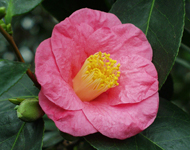 |
 In the greenhouses it’s always high season. A particular attraction
right into March is the blooming of the camellias and rhododendrons from
East Asia. On the citrus trees blossoms and fruits are often to be seen
at the same time. In the greenhouses it’s always high season. A particular attraction
right into March is the blooming of the camellias and rhododendrons from
East Asia. On the citrus trees blossoms and fruits are often to be seen
at the same time. |
| |
|
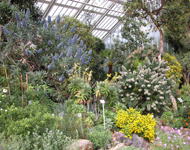 |
 In the Mediterranean Greenhouse, experience spring on the Canary Islands
and around the Mediterranean with a display of Viper’s Bugloss, Dragon
Arum and Giant Fennel in full bloom. In the Mediterranean Greenhouse, experience spring on the Canary Islands
and around the Mediterranean with a display of Viper’s Bugloss, Dragon
Arum and Giant Fennel in full bloom. |
| |
|
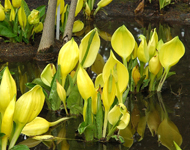 |
 Numerous early bloomers such as the Virginia Bluebell and the Trillium
create a magical carpet of flowers in the North American woods. In the
North American Marshland and Cypress Forest the great yellow bloom of
the Western Skunk Cabbage, which grows in water and has a pungent smell,
is a spectacular sight. Numerous early bloomers such as the Virginia Bluebell and the Trillium
create a magical carpet of flowers in the North American woods. In the
North American Marshland and Cypress Forest the great yellow bloom of
the Western Skunk Cabbage, which grows in water and has a pungent smell,
is a spectacular sight. |
| |
|
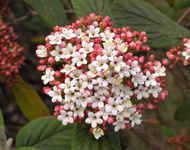 |
 Blooming shrubs such as forsythia, viburnum, lilac and weigela border
the path that continues on through the arboretum towards the rose
pavilion. Blooming shrubs such as forsythia, viburnum, lilac and weigela border
the path that continues on through the arboretum towards the rose
pavilion. |
| |
|
 |
 Around the rose pavilion you will be met by the sight of a host of
blossoming fruit trees, including cherry, pear and apple, all of them
members of the rose family. Compare the similarities in the arrangement
of their flowers. Around the rose pavilion you will be met by the sight of a host of
blossoming fruit trees, including cherry, pear and apple, all of them
members of the rose family. Compare the similarities in the arrangement
of their flowers. |
| |
|
 |
 On the way to the Japanese pavilion in early spring you will come across
the Amur Adonis and the Asian Skunk Cabbage. Drumstick Primroses gleam
in the distance. In the Japanese and Chinese woods, witch hazels are the
first to bloom, followed by magnolias, wild cherries, rhododendrons and
finally Tree Peonies. A curious sight is the flowering of the Dove Tree
or ‘Handkerchief’ Tree. On the way to the Japanese pavilion in early spring you will come across
the Amur Adonis and the Asian Skunk Cabbage. Drumstick Primroses gleam
in the distance. In the Japanese and Chinese woods, witch hazels are the
first to bloom, followed by magnolias, wild cherries, rhododendrons and
finally Tree Peonies. A curious sight is the flowering of the Dove Tree
or ‘Handkerchief’ Tree. |
| |
|
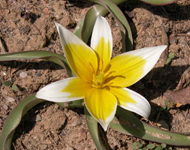 |
 At the height of spring the numerous species of wild tulips from the
Central Asian steppes create an enchanting spectacle with their variety
of colours and forms. They are the ancestors of our beloved garden
tulips. At the height of spring the numerous species of wild tulips from the
Central Asian steppes create an enchanting spectacle with their variety
of colours and forms. They are the ancestors of our beloved garden
tulips. |
| |
|
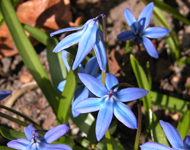 |
 Springtime is particularly attractive in the mountains of Anatolia and
Greece, in the Caucasus as well as in the Balkans. The slopes are abloom
with Sibthorp Primroses, Myrtle Spurges, crocuses and squills, making it
easy to forget one is in the city of Berlin. Springtime is particularly attractive in the mountains of Anatolia and
Greece, in the Caucasus as well as in the Balkans. The slopes are abloom
with Sibthorp Primroses, Myrtle Spurges, crocuses and squills, making it
easy to forget one is in the city of Berlin. |
| |
|
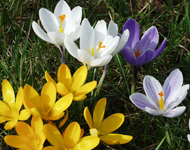 |
 At the foot of the Alps, a lush crocus meadow in full bloom offers a
dazzling frenzy of colours. Don’t miss the stunning view from the ‘summit’. At the foot of the Alps, a lush crocus meadow in full bloom offers a
dazzling frenzy of colours. Don’t miss the stunning view from the ‘summit’. |
| |
|
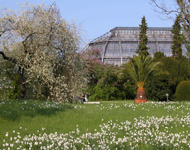 |
 At the end of the tour, enjoy the wonderful sight of the greenhouses
behind blooming Poet’s Daffodils on a meadow presided over by an old St
Lucie Cherry tree. At the end of the tour, enjoy the wonderful sight of the greenhouses
behind blooming Poet’s Daffodils on a meadow presided over by an old St
Lucie Cherry tree. |
| |
|
| |
|
















